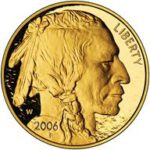How to Tell if Gold Bullion is Real: A Comprehensive Guide for Researchers
Introduction
Gold bullion, with its timeless allure and intrinsic value, has been a sought-after asset for centuries. Whether you are an investor, collector, or researcher, the authenticity of gold bullion is of paramount importance. In this comprehensive guide, we will explore the various methods and strategies to determine whether your gold bullion is real or counterfeit. We will delve into physical tests, professional verification services, common signs of fake bullion, and essential tips to safeguard your precious assets.
The Importance of Authenticating Gold Bullion
The authenticity of gold bullion is critical for investors and researchers alike. Knowing whether your gold is real ensures the value of your investment and the accuracy of your research. Counterfeit gold can have severe financial consequences and impact the integrity of your work.
Significance of Real vs. Fake Gold Bullion
Real gold bullion holds its value over time and serves as a reliable store of wealth. In contrast, counterfeit gold undermines trust in the market, leading to financial losses and a tarnished reputation.
Purpose of the Article
This article aims to equip researchers with the knowledge and tools necessary to identify real gold bullion accurately. We will explore various testing methods, highlight the benefits of professional verification services, identify common signs of fake bullion, and provide essential tips to safeguard your gold assets.
Physical Tests for Authenticating Gold Bullion
When assessing the authenticity of gold bullion, several physical tests can be employed to ensure its genuineness. Let’s examine these tests:
Visual Inspection
A careful visual examination can reveal potential discrepancies. Real gold typically exhibits a consistent, deep yellow color, while fake gold may appear brassy or have inconsistent coloring.
Magnetic Properties
Gold is not magnetic, so a strong attraction to a magnet is a sign of counterfeit bullion. Real gold should not be drawn to a magnet.
Density and Weight
Gold has a specific density and weight that can be measured accurately. Counterfeit bullion made from materials like tungsten may have a different weight or density.
Acid Testing
Acid testing involves applying specific acids to the bullion to observe the reaction. Real gold does not react to nitric acid, while fake gold may produce a chemical reaction.
Sound Test
Authentic gold produces a clear, ringing sound when struck, often described as a “ping.” Counterfeit gold may produce a dull or thud-like sound.
Using Professional Verification Services
Professional authentication services offer a reliable and comprehensive way to verify the authenticity of gold bullion. These services employ advanced techniques and equipment to provide accurate results.
Benefits of Professional Authentication
Professional verification offers the following advantages:
- Expertise and experience
- Non-destructive testing
- Certificates of authenticity
- Peace of mind for investors and researchers
Reputable Verification Companies
Research and choose well-established verification companies with a track record of accuracy and integrity. Reputable services often have a network of experts and state-of-the-art equipment.
Process of Authentication
The authentication process typically involves a series of tests, including density measurements, X-ray fluorescence analysis, and ultrasound testing. Once verified, you receive a certificate of authenticity.
Common Signs of Fake Gold Bullion
Recognizing common signs of counterfeit gold bullion is crucial for researchers and investors. Be vigilant for these indicators:
Tungsten Core Counterfeits
Some counterfeiters use tungsten cores with gold plating to mimic the weight and appearance of real gold bullion. An X-ray analysis can reveal the core material.
Plated or Gilded Coins
Counterfeiters may create coins with thin layers of gold plating or gilding. Scratching or cutting such coins may reveal the underlying base metal.
Incorrect Dimensions and Weight
Counterfeit bullion often exhibits slight deviations in dimensions and weight when compared to genuine products.
Mismatched Hallmarks and Stamps
Examine the hallmark and stamps on the bullion carefully. Counterfeiters may misspell or improperly engrave markings.
Tips for Safeguarding Your Gold Bullion
Researchers and investors can take proactive steps to protect their gold assets:
Buy from Reputable Dealers
Purchase gold bullion from reputable dealers with a history of trustworthy transactions and authenticity guarantees.
Request Authenticity Certificates
Always request authenticity certificates when buying gold bullion. These certificates provide proof of the bullion’s legitimacy.
Store in Secure Locations
Safeguard your gold bullion by storing it in secure locations, such as a bank safe deposit box or a professional storage facility.
Periodic Reauthentication
Periodically verify the authenticity of your gold bullion, especially if it has been out of your possession or stored in uncontrolled environments.
Conclusion
In conclusion, authenticating gold bullion is a critical aspect of both research and investment. By employing physical tests, considering professional verification services, recognizing common signs of fake bullion, and following essential tips, researchers can ensure that their work is based on accurate information, and investors can safeguard their wealth. Remember that knowledge and vigilance are your best allies in the quest to identify real gold bullion accurately. Whether you are researching historical markets or preserving your financial assets, authentic gold bullion remains a timeless and trustworthy resource in today’s ever-changing world.
















